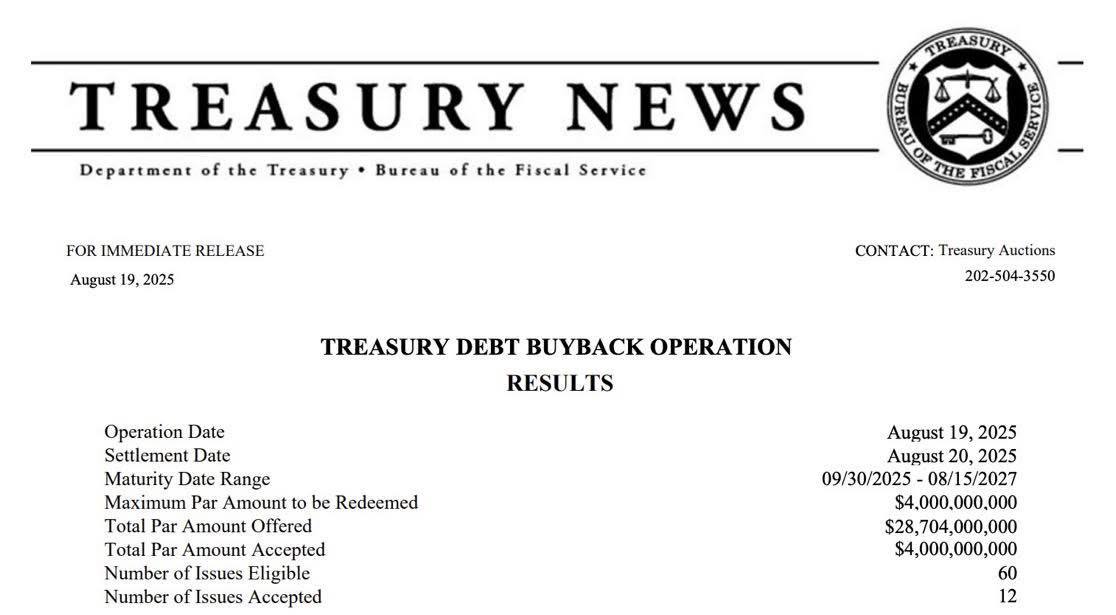U.S. TREASURY JUST BOUGHT BACK $4 BILLION OF ITS OWN DEBT — ONE OF THE LARGEST BUYBACKS IN HISTORY
What Happened?
On August 19, 2025, the U.S. Treasury executed a $4 billion debt buyback, one of the largest in its history.
- Investor offers: $28.7 billion
- Treasury accepted: $4 billion (the maximum it planned to buy)
- Eligible issues: 60 Treasury securities
- Accepted issues: 12

In other words, investors were willing to sell nearly seven times more than what the Treasury was prepared to repurchase — a strong signal that many bondholders were eager to offload certain maturities.
Why Does This Matter?
1. Liquidity Management
The Treasury targeted less liquid bonds in order to smooth the yield curve and improve market functioning. Think of this as unclogging traffic in the world’s most important debt market.
2. Debt Strategy & Refinancing
By retiring some debt early instead of waiting for maturity, the Treasury reduces refinancing risks. With trillion-dollar deficits, buybacks help shape the future supply of bonds.
3. Market Sentiment
The fact that investors rushed to sell highlights their expectations:
- Rising interest rates ahead.
- Inflationary pressures.
- Preference to reduce exposure to long-dated Treasuries.
4. Historical Significance
The U.S. last ran large-scale buybacks in the early 2000s — during budget surpluses. Seeing them again now, in an era of record debt, signals a return to active debt management rather than just rolling over obligations.
The Bigger Picture – Why You Should Care
Treasuries are the foundation of global finance. Any shifts in U.S. debt strategy ripple through:
- Retirement savers: Bond yields shape pension fund performance.
- Institutional investors: Portfolios worldwide benchmark against Treasuries.
- Global markets: From Africa to Asia, U.S. debt moves currencies, capital flows, and even local borrowing costs.
For example:
- If yields rise, emerging market currencies (like Botswana’s pula or South Africa’s rand) often weaken.
- Global investors may pull capital from local markets back into U.S. bonds, tightening liquidity at home.
What Does This Mean for You?
Whether you live in Botswana, South Africa, or abroad, these shifts impact your:
- Retirement security.
- Investment portfolio returns.
- Long-term financial planning.
At Legacy Ladder, we help you decode these global signals and build wealth strategies that protect and grow your assets — even when the world’s largest economies are reshuffling their debt.
Book your free consultation today and let’s position your wealth to thrive in uncertain times.